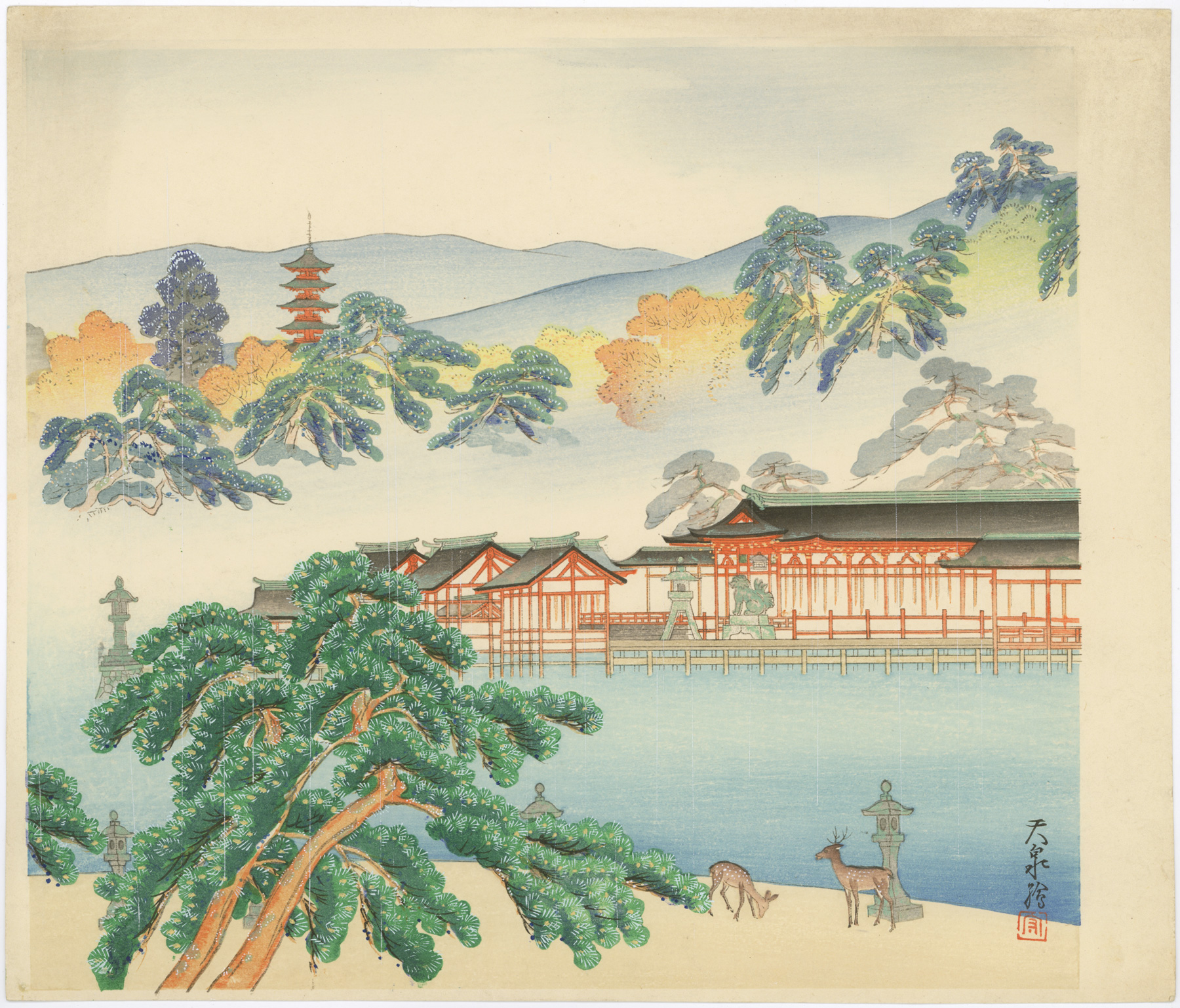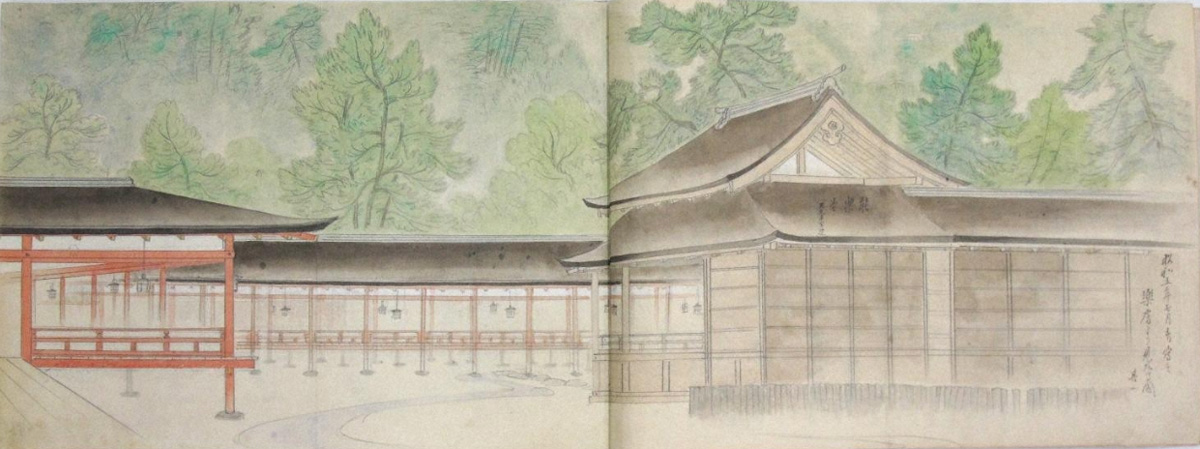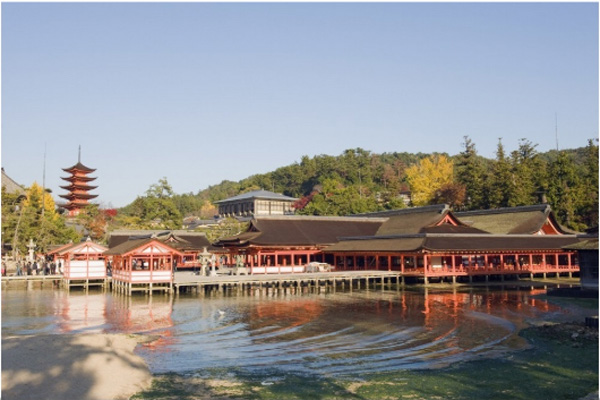About This Print
The artist's rendering of Itsukushima on Miyajima with Gojunoto (the Five-storied Pagoda) in the background and the famous Sika deer in the foreground during a gentle rain. The print was included in a portfolio titled 瀬戸内三題 (Three Subjects of Setouchi), issued by Watanabe Publishing in 1935, which included three woodblock prints designed by Ogyū as shown below.
荻生天泉「雨の宮島」根上富治「鞆の津」永田春水「五劔山暁色」
Ogyū Tensen "Miyajima in Rain", Negami Tomiji (1895-1981), "Tomo no Tsu",
Nagata Shunsui (1872-1944) "Dawn Colors Gokenzan"
click on image to enlarge
source: Hanga-do print catalog http://hanga-do.com/img/Hangado130.pdf
Ogyū had painted the below drawing of Itsukushima in 1930.
Miyajaima by Ogyū Tensen, 1930
drawing on paper
27.5 x 39.2 cm
Source: Nihonmatsu City Board of Education Museum Collections 011
Miyajima and Itsukushima
Source: extracted from the Miyajima Official Tourism website http://visit-miyajima-japan.com/en/culture-and-heritage/spiritual-heritage-temples-shrines/sanctuaire-itsukushima.html
Miyajima Island, one of the most scenic spots in Japan, has long been regarded as an Island of Gods on the beautiful Seto Inland Sea. It is a romantic and historical island where Itsukushima Shrine, a World Heritage site, is located, along with the Virgin Forest of Mt. Misen, and numerous preserved shrines, temples and historical monuments.
Itsukushima shrine has more than 1400 years of history, and is a registered World Heritage Site. The vermillion lacquered shrine fits well with the Prussian blue sea, and the green of the virgin forest, recreating the elegance of the Heian era.
From ancient times, people have sensed the spiritual sanctity of Miyajima, and have revered and worshipped the island itself as goddesses. The main shrine is said to have been constructed in 593 by Saeki Kuramoto.
Since the shrine is built in the sea, the foundation posts are submerged in the water and decay rather easily. Furthermore, the shrine becomes weathered and is sometimes battered by the sea breezes and typhoons. Although constant and comprehensive maintenance is required due to these natural factors, nearly 800 years have passed since Itsukushima Shrine was first built, and we are fortunate to be able to see the same shrine as the Heian Court did.
Designated as a Specially Preserved Building on April 7, 1900. The Five-storied Pagoda was originally constructed in 1407, and it was restored in 1533. The main deity enshrined here is the Buddha of Medicine, accompanied by the Buddhist saints Fugen and Monju.
Print Details
| IHL Catalog | #1962 |
| Title | Miyajima in Rain 雨の宮島 |
| Series | from the portfolio 瀬戸内三題 (Three Subjects of Setouchi) |
| Artist | Ogyū Tensen (1882-1947) |
| Signature |  天泉絵 Tense-e 天泉絵 Tense-e |
| Seal | unread artist's seal (see above) |
| Publication Date | not dated |
| Publisher | Watanabe Publishing |
| Printer | unknown |
| Impression | excellent |
| Colors | excellent |
| Condition | excellent |
| Genre | shin hanga |
| Miscellaneous | |
| Format | |
| H x W Paper | 10 1/16 x 12 in. (25.6 x 30.5 cm) |
| H x W Image | 9 1/2 x 10 3/4 in. (24.1 x 27.3 cm) |
| Collections This Print | Nihonmatsu City Board of Education Museum Collections 003 |
| Reference Literature |





